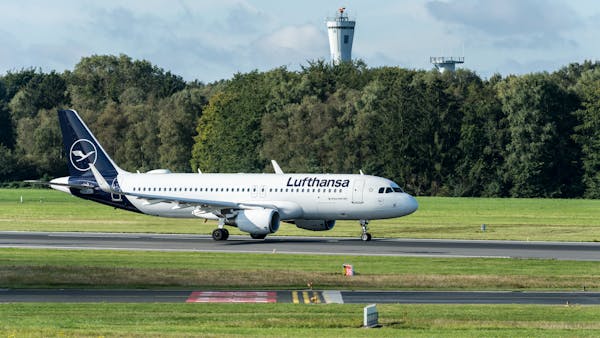
Introduction
The commercial aviation industry relies on a relatively select group of aircraft models that dominate airline fleets around the world. These popular commercial aircraft have earned their place by combining efficiency, reliability, and passenger appeal, helping airlines optimize operations and meet evolving market demands. This article delves into the most popular commercial aircraft, highlighting their features, advantages, and the reasons behind their widespread use.
1. The Boeing 737 Family: The Workhorse of Short to Medium Haul
Overview and Popularity
The Boeing 737 family is arguably the most popular commercial aircraft series globally, with over 10,000 units produced since its introduction in the late 1960s. The aircraft’s versatility, efficiency, and strong support network make it a favorite among low-cost carriers, legacy airlines, and regional operators alike.
Its models range from the smaller 737-600 to the larger 737-900ER and the newest 737 MAX series, catering to a wide spectrum of route demands.
Features and Operational Benefits
-
Fuel Efficiency: The latest 737 MAX models incorporate advanced engines and winglets that significantly reduce fuel consumption.
-
Capacity: Seating capacities vary from approximately 130 to 230 passengers, making it flexible for various markets.
-
Range: With a range up to around 3,800 nautical miles, it supports both short and medium-haul routes.
Many airlines value the Boeing 737 for its:
-
Lower operating costs
-
Commonality across variants simplifying pilot training
-
Extensive global support infrastructure
2. The Airbus A320 Family: Airbus’s Answer to Market Demand
Dominance in Narrow-Body Market
The Airbus A320 family rivals the Boeing 737 in popularity, especially with its innovations in fly-by-wire technology and cabin comfort. Since its debut in the late 1980s, over 9,000 aircraft from the A318, A319, A320, and A321 variants have been delivered globally.
This family is favored by both full-service and low-cost airlines due to its efficient design and passenger-friendly cabin layout.
Key Advantages
-
Advanced Technology: Fly-by-wire control systems provide smoother handling and improved safety.
-
Passenger Comfort: Wider cabins allow for wider seats and aisles compared to many competitors.
-
Flexibility: Versions like the A321XLR extend the aircraft’s range, opening new medium-haul markets.
Airlines benefit from:
-
Lower fuel burn in newer Neo variants
-
Common cockpit design enhancing crew flexibility
-
Strong aftermarket and maintenance support
3. Wide-Body Giants: Boeing 777 and Airbus A350
The Long-Haul Fleet Leaders
For long-haul and high-capacity routes, airlines turn to wide-body aircraft like the Boeing 777 and Airbus A350, which dominate international travel markets.
The Boeing 777, introduced in the mid-1990s, remains a workhorse with its large seating capacity and range exceeding 8,500 nautical miles. The Airbus A350, a more recent entry, boasts advanced materials and systems aimed at improving fuel efficiency and passenger comfort.
Performance and Passenger Appeal
-
Capacity: The Boeing 777 typically seats between 314 and 396 passengers, while the A350 seats approximately 300 to 350 passengers depending on configuration.
-
Range: Both aircraft comfortably operate ultra-long-haul flights, connecting distant cities non-stop.
-
Cabin Features: Larger windows, lower cabin altitude, and quieter engines improve passenger experience on lengthy journeys.
Many airlines choose these aircraft for:
-
Their reliability and operational flexibility
-
Cost savings on fuel and maintenance compared to older wide-bodies
-
Ability to open new direct routes with economic viability
4. Regional Jets and Turboprops: Catering to Smaller Markets
Embraer E-Jets and Bombardier CRJ Series
For regional and feeder routes, airlines rely on smaller commercial aircraft such as the Embraer E-Jet family and Bombardier CRJ series. These jets efficiently connect smaller cities with major hubs, supporting airline network connectivity.
The Embraer E2 series, the latest generation, offers improvements in fuel efficiency and passenger comfort while maintaining operational flexibility for regional routes.
Turboprops: The Role of ATR and Dash 8
Turboprops like the ATR 72 and De Havilland Canada Dash 8 excel on very short routes and airports with shorter runways. Their fuel economy on short sectors and ability to operate from smaller airports make them popular in markets with limited infrastructure.
Advantages:
-
Lower operating costs for short sectors
-
Access to airports unsuitable for jets
-
Ability to serve niche regional markets efficiently
5. Factors Driving Popularity: Why Airlines Choose These Aircraft
Fleet Commonality and Training
One of the biggest drivers behind the popularity of certain commercial aircraft is fleet commonality. Airlines minimize training costs and maximize scheduling flexibility when operating aircraft from the same family or manufacturer.
Maintenance and Spare Parts Availability
Popular aircraft models benefit from wide global networks for maintenance and parts availability, reducing downtime and ensuring operational reliability.
Market Adaptability and Passenger Preferences
Aircraft that can serve diverse markets — from short regional hops to ultra-long-haul flights — provide airlines with competitive advantages. Additionally, models that enhance passenger comfort help improve brand reputation and loyalty.
Table: Popular Commercial Aircraft Summary
| Aircraft Family | Typical Capacity | Range (nautical miles) | Market Segment | Key Strengths |
|---|---|---|---|---|
| Boeing 737 | 130-230 | ~3,800 | Short to medium haul | Efficiency, fleet commonality |
| Airbus A320 | 140-240 | ~3,500 | Short to medium haul | Cabin comfort, advanced tech |
| Boeing 777 | 314-396 | 7,370-8,555 | Long haul | Capacity, reliability |
| Airbus A350 | 300-350 | 8,000+ | Long haul | Fuel efficiency, passenger comfort |
| Embraer E-Jets | 70-130 | 1,500-2,500 | Regional jet | Operational flexibility |
| ATR 72 / Dash 8 | 70-80 | 800-1,000 | Regional turboprop | Short runway performance |
Conclusion: The Backbone of Global Aviation
The most popular commercial aircraft serve as the backbone of airline operations worldwide. Their combination of efficiency, reliability, capacity, and passenger comfort explains their dominance in airline fleets. As technology advances, these aircraft families continue evolving to meet the changing demands of airlines and travelers alike.